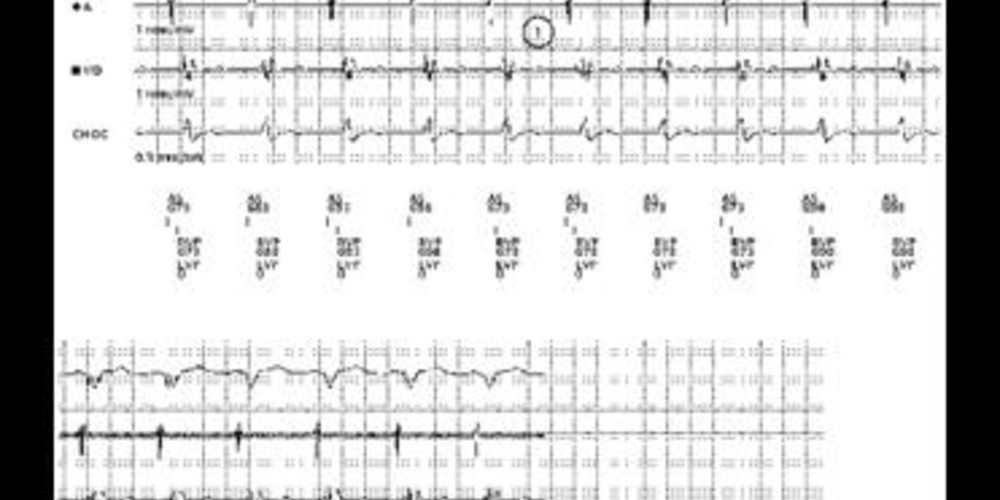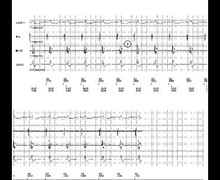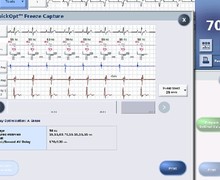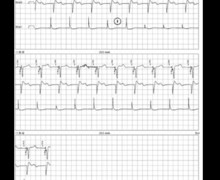Optimization of the AV delay in a pacemaker non-dependent patient
Tracing
Manufacturer Boston Scientific
Device CRT
Field AV & VV delays optimization
N° 3
Patient
This 67-year-old man received a Boston Scientific Cognis triple chamber defibrillator in the context of a dilated cardiomyopathy with left bundle branch block. During an ambulatory visit, the AV delay was re-programmed and tracings were recorded.

Graph and trace
- the spontaneous AV delay was programmed short (80 ms). Rhythm sensed in the atrium and BiV stimulated. Probable complete BiV capture.
- spontaneous AV delay programmed at 110 ms. Changed morphology of the ventriculogram, consistent with fusion, and narrower than the complete BiV capture.
- spontaneous AV delay programmed at 140 ms. The axis has changed compared to the previous tracing. QRS relatively narrow.
- alternans between stimulated and sensed ventricular events, depending on the variations in spontaneous AV conduction and more or less early sensing of the atrial activity (the AV delay is too long on this cycle).
- sensed AV delay programmed at 180 ms. The device sensed the spontaneous ventricular event and withheld stimulation. Left bundle branch block morphology with activation of the right ventricle before the left ventricle.
- programming of the trigger algorithm (RV sensing and BiV stimulation). Aspect of fused QRS (different and narrower than the spontaneous QRS).
Other articles that may be of interest to you







This tracing replicates the various observations of the previous tracing with a fusion morphology or absence of BiV stimulation (spontaneous conduction). On the other hand, in this patient, the aspect of the QRS could be modified and considerably shortened by the trigger function, compared with spontaneous rhythm. In patients with left bundle branch block, RV activation precedes LV and triggers BiV stimulation, explaining a possible fusion between spontaneous activity and activity originating from the LV stimulation. This type of algorithm can be programmed in patients with left bundle branch block and right-sided lead dysfunction (sensing failure) by operating the device in “VVT” mode.